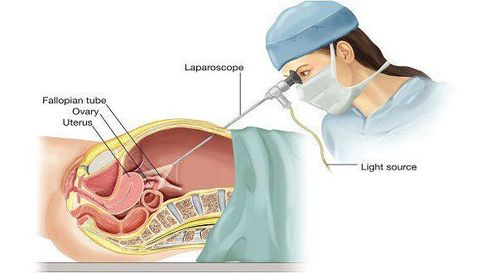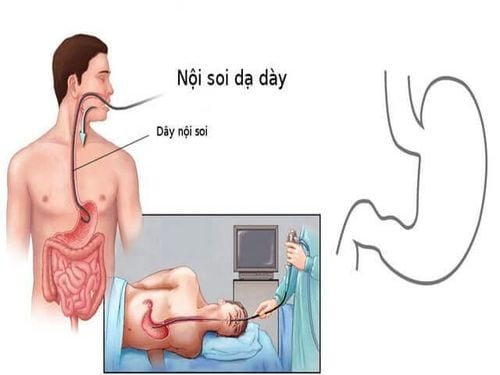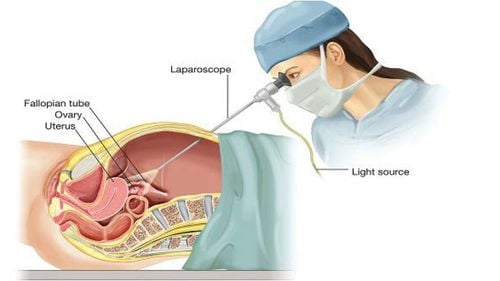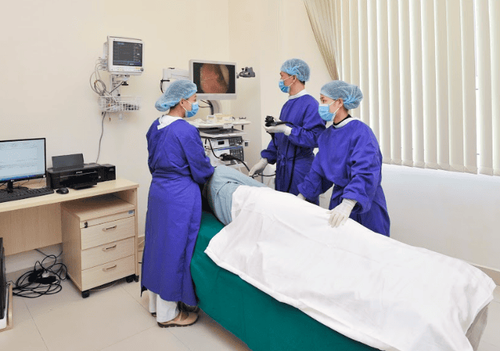This is an automatically translated article.
The article was professionally consulted by Master, Resident, Specialist I Trinh Le Hong Minh - Department of Diagnostic Imaging - Vinmec Central Park International General HospitalIn the past, when a patient suffered an abdominal injury, most doctors would have to cut open the abdomen to investigate. This method gives a high rate of "white belly", not only that, but it can lead to some complications after surgery. Laparoscopy in the diagnosis and treatment of abdominal trauma has helped patients avoid unnecessary exploratory operations, and at the same time reduce the rate of postoperative complications and reduce treatment costs.
1. The necessity of laparoscopy in the diagnosis and treatment of blunt abdominal trauma
In emergency blunt abdominal trauma, there are many times when the surgeon needs to decide whether to operate or not in a short period of time, after clinical examination and minimal laboratory work. With the development of science and technology, people are trying to find new ways to make the diagnosis more accurate and faster to reduce unnecessary surgeries and also avoid late surgery. Although we now have a lot of modern exploration methods such as ultrasound, X-ray, CT, MRI, ... but it is not easy for doctors to decide whether to operate on the abdomen or not.According to some statistics, 10 - 66% of deaths in blunt abdominal trauma are due to delayed diagnosis leading to late surgery or misdiagnosis leading to incorrect treatment. Because of that, there are quite a few cases of surgery that are exploratory, examination or just minimal intervention. In such cases, doctors can use laparoscopy as a diagnostic measure with high accuracy because the lesion can be directly visualized. At the same time, this is also an effective method of treating lesions that is minimally invasive.
2. Indications and contraindications of laparoscopy in the diagnosis and treatment of blunt abdominal trauma

When the patient is suspected of having unproven visceral damage. When organ damage is suspected even when other imaging methods are negative. When needed to diagnose diaphragmatic injury in patients with blunt abdominal trauma. When it is necessary to create a pericardial window across the diaphragm in cases of suspected cardiac injury. Cases of contraindications to laparoscopy in the diagnosis and treatment of blunt abdominal trauma are:
Hemodynamic instability of the patient. Patients with clear indications for laparotomy: signs of peritonitis, hemorrhagic shock, etc. Patients with obvious signs of organ damage The experience of the operator is limited.
3. Advantages and disadvantages of laparoscopy in the diagnosis and treatment of blunt abdominal trauma
Advantages of laparoscopy in diagnosis and treatment of closed abdominal trauma:Helps to detect early lesions in difficult-to-diagnose patients, avoid missing lesions leading to late surgery, shorten follow-up time. Helps accurately assess which organs are damaged and the extent of the damage, thereby making a decision whether to open the abdomen or not. Thus minimizing unnecessary laparotomy. In the event that an open surgery is required, the surgeon will also be proactive in choosing the appropriate incision, because the lesion has clearly changed. Helps to exclude intra-abdominal injury in patients with multiple trauma, making resuscitation better and more convenient. The method has the ability to repair injuries ranging from simple as electrocautery to hemostasis, rupture of small intestine, bladder to bowel resection,... Laparoscopic surgery helps to reduce the number of large laparotomy with a therapeutic role. . Limitations of laparoscopy in the diagnosis and treatment of closed abdominal trauma:
Laparoscopy is a less invasive method of exploration, but only observing through the camera, the doctor cannot continue to palpate the lesion with hand, making it difficult to assess discreet lesions. Injury inside solid organs cannot be assessed. Retroperitoneal lesions cannot be assessed if the patient has a large retroperitoneal hematoma. Delaying therapeutic interventions due to missed lesions can lead to serious complications for the patient. Requires modern, expensive equipment. Requires surgeons to be well trained and skilled. The possibility of endoscopic intervention also depends on the skill of the surgeon and the equipment of the facility.

4. Complications due to laparoscopy in diagnosis and treatment of blunt abdominal trauma
Common complications in laparoscopy in the diagnosis and treatment of blunt abdominal trauma are:Tension pneumothorax due to omission of damage to the diaphragm. Hollow visceral perforation. Solid organ tear. Vascular injury due to trocar placement. Pneumothorax under the skin. Extraperitoneal pneumothorax. Infection of the trocar hole. Laparoscopy plays an important role in the diagnosis and treatment of blunt abdominal trauma. The method helps to reduce the rate of unnecessary laparotomy (white laparotomy) and helps reduce the rate of postoperative complications. Diagnostic laparoscopy can be combined with therapeutic laparoscopy as needed if performed by specialists.
Vinmec International General Hospital gathers a team of qualified and skilled medical doctors from all over the country and abroad; The equipment system is focused on investment, meeting international standards, thus ensuring the best possible surgery.
If you have a need for consultation and examination at the Hospitals of the National Health System, please book an appointment on the website for service.
Please dial HOTLINE for more information or register for an appointment HERE. Download MyVinmec app to make appointments faster and to manage your bookings easily.














